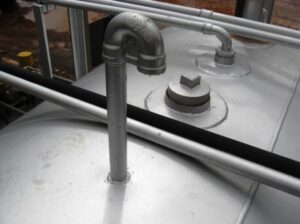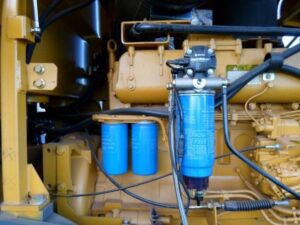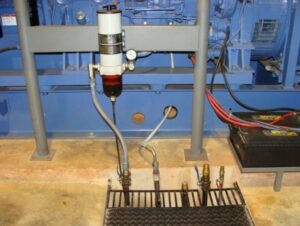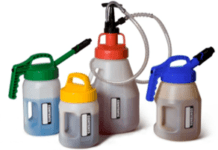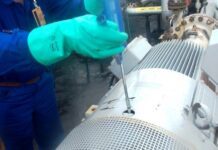
Marcos Thadeu Lobo
Mechanical Engineer Graduated from the State University of Campinas (Unicamp). He currently works as an Associate Consultant at QU4TTUOR CONSULTORIA.
Injection System
1.5 – CONTAMINATION
Damages to the injection system
The contaminants present in the fuel (Oil, Highway Diesel BS500/BS10; OCA1; Marine Diesel Oil DMA/DMB; OCM 120/180/380 etc.) can be as abrasive as the materials used in the machining of parts during the manufacturing process, Therefore, it is extremely important to remove as much abrasive solid particulate material as possible before they damage critical components of the injection system.
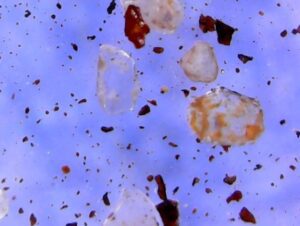
 Images 1/2 – Abrasive solid particulate material
Images 1/2 – Abrasive solid particulate material
The solid particulate material present in the fuel causes premature wear to the injection units, reducing their useful life, reducing the performance of the injection system and, consequently, of the internal combustion engine Ciclo Diesel 4T and can even cause sudden seizure of the units of injection.
 Images 3/4 – The presence of solid particulate matter shortens the life of the fuel injection system and reduces engine performance.
Images 3/4 – The presence of solid particulate matter shortens the life of the fuel injection system and reduces engine performance.
Abrasive solid particulate matter with dimensions between 5 micron – 10 micron can damage injection units by breaking the fluid film of fuel that lubricates its moving parts and eventually scratching valve plungers, nozzle needles, nozzle body, injector body , causing metal-to-metal contact to occur and the injection unit to lock up. Little abrasive solid particulate matter present in fuel can quickly damage injection units.

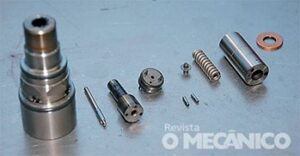 Images 5/6 – Fuel contaminated with abrasive solid particulate material: premature wear of moving components of injection units.
Images 5/6 – Fuel contaminated with abrasive solid particulate material: premature wear of moving components of injection units.
Fuel contamination control has grown in importance with a view to maximizing the service life of fuel injection systems. Fuel injection systems that equip modern 4T Cycle Diesel internal combustion engines even exceed injection pressures of 30,000 psi in order to obtain greater power, reduce fuel consumption and reduce polluting emissions. In order for these injection pressures to be achieved, dimensional tolerances of less than 5 microns are required in the parts of the fuel injection system.
Images 7/8 – Dimensional tolerances less than 5 microns.
The aforementioned injection pressures and dimensional tolerances make fuel injection systems much more sensitive to wear and abrasion.
- Injection unit nozzles: abrasive solid particulate material moves quickly in high injection pressure systems causing damage and erosion at the injection holes resulting in incomplete atomization and fuel overfeeding, compromising the performance of the internal combustion engine Diesel Cycle 4T and fuel consumption. Abrasive solid particulate matter and water can result in more difficult starts of mobile equipment, increased pollutant emissions. Larger abrasive solid particles can even clog injection holes.
Images 9/10 – Eroded injection holes lead to incomplete atomization.
- Valve Plungers, Nozzle Needles, Nozzle Body, Nozzle Body: Abrasive solid particulate material can cause wear between valve piston and nozzle body and between nozzle needle and nozzle body.
Images 11/12 – Damage to metal surfaces caused by contaminants.
Scratching of metal surfaces can also occur, with consequent metal-to-metal contact and eventual lock-up of the injection unit.
- Control Valves: Abrasive solid particulate material and water damage valves that control fuel pressure by eroding the metal surfaces of valve components in relative motion. This type of failure leads to leaks and eventual loss of power in the Diesel 4T Cycle internal combustion engine.

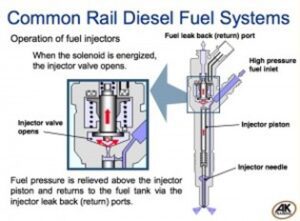 Images 13/14 – Contaminants damage control valves.
Images 13/14 – Contaminants damage control valves.
Abrasive solid particulate matter with an average dimension of 5 microns can damage fuel injection systems (1 micron is one millionth of a meter).
Images 15/16 – Comparison: human hair x solid particulate material.
By way of comparison, we can say that the average diameter of 1 human hair is 80 microns and that the average clearances in modern fuel injection units of internal combustion engines Cycle Diesel 4T is 4 microns, making it easy to understand how small amounts of abrasive solid particulate matter and water present in fuel can cause serious damage.
As the main sources of contamination of the fuel used in internal combustion engines, Diesel 4T Cycle can be mentioned:
- Contaminants (eg abrasive solid particulate matter, water) can enter the fuel during handling and transport. Reliable suppliers, dispensing fuel after efficient filtration and periodic monitoring of fuel quality through appropriate tests can ensure a consistent quality of fuel used.
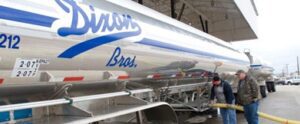
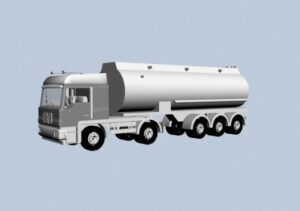 Images 17/18 – Contamination can occur during handling and transport.
Images 17/18 – Contamination can occur during handling and transport.
- Airborne solid particulate matter can be inhaled into the fuel tank through the vent tube.
Images 19/20 – Breather tubes: filters for retaining particulates.
If desiccant filter and for retention of abrasive solid particulate material is not installed in the breather tube, the fuel inside the bulk storage tank may be contaminated by the natural contraction movement of the fuel volume with the drop in ambient temperature (ingestion), especially if the filling station is in a humid atmosphere and with a lot of dust in suspension.

 Images 21/22 – Dusty and humid environments: need for filters in the vent tubes of fuel storage tanks.
Images 21/22 – Dusty and humid environments: need for filters in the vent tubes of fuel storage tanks.
- Abrasive solid particulate matter can contaminate fuel during maintenance, operation, and fueling of mobile equipment if care is not taken.
 Images 23- Fueling using sealed quick-connect connections prevents fuel contamination by abrasive solid particulate material.
Images 23- Fueling using sealed quick-connect connections prevents fuel contamination by abrasive solid particulate material.
The ISO 4406:2021 Solid Particle Contamination Code (Hydraulic Fluid Power – Fluids – Method For Coding The Level Of Contamination By Solid Particles) refers to the number of particles of solid material contained in a 01 ml sample according to 03 different Number of Class (R):
- The first Class Number (R4) refers to the number of solid material particles greater than 4 microns.
- The second Class Number (R6) refers to the number of solid material particles greater than 6 microns.
- The third Class Number (R14) refers to the number of particles of solid material greater than 14 microns.
 Image 24 – ISO 4406:2021 Solid Particle Contamination Code
Image 24 – ISO 4406:2021 Solid Particle Contamination Code
For example: General Cleanliness Level 21/19/16 according to the ISO 4406:2021 Solid Particle Contamination Code (Hydraulic Fluid Power – Fluids – Method For Coding The Level Of Contamination By Solid Particles ) means that in 01 ml of sample fuel is present:
- Class R4 number ( 21 ): between 10000 and 20000 solid particles > 4 microns
- Class number R6 ( 19 ): between 2500 and 5000 solid particles > 6 microns
- Class number R14 (16): between 320 and 640 solid particles > 14 microns
 Image 25 – General Cleaning Level 21/19/16 (ISO 4406:2021)
Image 25 – General Cleaning Level 21/19/16 (ISO 4406:2021)
The elevation of 01 Class Number ( R ) means that the quantity of particles of that dimension (4 micron, 6 micron, 14 micron) will double.
Images 26/27 – Fuel contamination by solid particulate matter.
The components with extremely tight dimensional clearances that make up the modern fuel injection systems present in the Diesel 4T Cycle internal combustion engines demand fuels with an excellent General Level of Cleanliness for which onboard fuel filters specifically selected for the application and with a medium pore size filter medium sufficiently capable to remove more than 99.9% of particulate material abrasive solid of equal or greater 2 micron (Beta Ratio = 1000) and water.
Images 28/29 – Modern fuel injection systems demand specific “on-board” fuel filters.
On-board fuel filters specifically sized for modern injection systems will provide the following differentials to the Diesel 4T Cycle internal combustion engines:
- Maximum performance and fuel economy.
- Reduction of abrasive action caused by abrasive solid particulate material and reduction of corrosive action caused by water contamination in injection units and high-pressure pump.
- Less need for adjustments to the injection system.
- Lower emission of pollutants (solid particulate matter; NOx; HC).
- Easier start-ups and greater operational availability of machinery.












